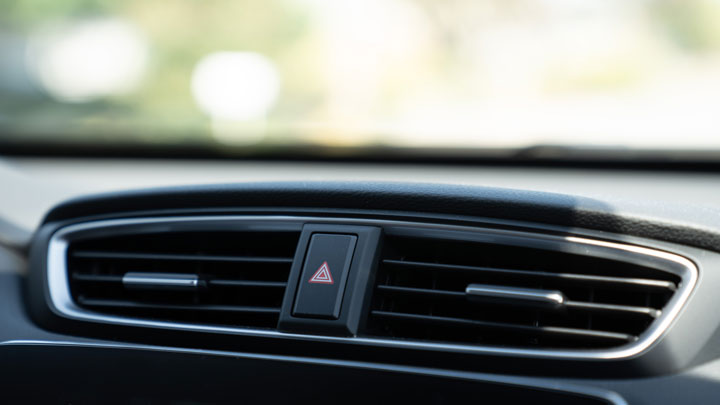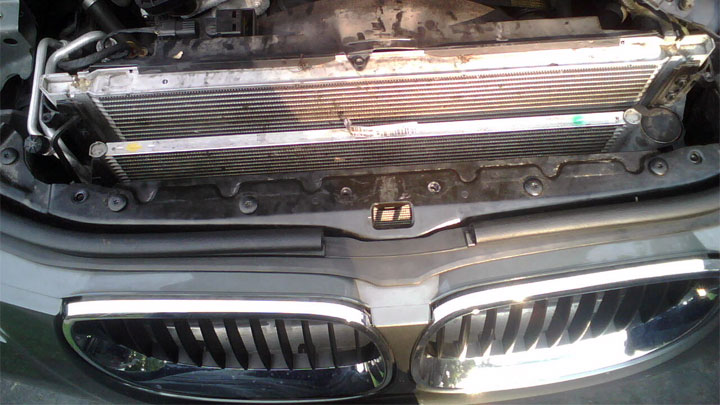Last Updated on November 14, 2022
Air conditioning is essential for the comfort of every trip you take in your vehicle, particularly in parts of the world where the weather is hot for a greater portion of the year. Yet many people do not understand how it works, leaving them with expensive car repair costs.
Learning about what an A/C expansion valve does and its common failure symptoms will help you to keep costs down if it ever comes time to replace it.
How an A/C Expansion Valve Works

The main function of an air conditioner expansion valve is to remove pressure from the liquid refrigerant in the system.
This allows for expansion, and then converts the refrigerant from liquid to vapor inside the evaporator. In addition, the valve controls the refrigerant flow, called metering.
Inside of the valve is a moveable rod that moves up and down. This enables it to open and close the passageway inside, allowing refrigerant to enter, or not.
At any given time it can accurately meter the precise amount of refrigerant that’s needed. As you know, some days it’s hotter than others, so this control is needed to adjust the A/C, otherwise you’re going to be too uncomfortable in your car.
In fact, failure of the expansion valve is one of the top reasons that your A/C has stopped functioning well, as it can wear out over time.
See Also: How to Clean a Vehicle Cabin Filter
Bad A/C Expansion Valve Symptoms
Generally, the first time you get a clue that something is wrong with your air conditioning it’s through a symptom of a faulty A/C expansion valve.
#1 – Poor Air Conditioning Performance

That first symptom is often with your A/C blowing warm air, instead of cool, even after giving the car a few minute to run on a hot day. This signifies that not enough refrigerant is getting to the evaporator.
At first, it may seem like the airflow is simply not as cold as it used to be and will ultimately get to the point of warm air coming out of the vehicle’s vents no matter how low of a temperature you set the dial on the HVAC to.
#2 – Inconsistent Airflow From Vents

Simply put, the air coming out of your vents will be either too warm or too cold than what you are used to and in many cases will alternate back and forth between the two.
If you notice that the temperature inside the vehicle cabin seems to constantly be going from warm to cold, you may very well have a problem with your expansion valve.
#3 – Air Conditioning Constantly Running

Another indicator is when your A/C compressor is constantly running. This is because the expansion valve will get stuck and fail to open. This means that the compressor will continue to pump refrigerant into the A/C’s system, even when you already feel cold.
At this point, it’s recommended to take your vehicle to a vehicle air conditioning place to have it repaired. Unfortunately, the valves are often deep within your vehicle’s A/C system and it’s not as simple as opening a door and putting gas in your vehicle.
Related: Symptoms of a Bad A/C Condenser
#4 – Frost Forming on A/C Compressor or Vents

This is the opposite of #1 above. In this case, TOO MUCH refrigerant is being allowed to flow to the evaporator unmetered which eventually causes the evaporator to freeze over. In extreme cases, you may even start to notice a bit of frost forming on one or more of the interior vents in the front of the cabin.
The A/C expansion valve will often have a frosty surface to it which pretty much guarantees it’s the culprit and in need of replacement.
A/C Expansion Valve Replacement Cost
Best places to order parts? See: 19 Best Online Auto Parts Stores
Usually, replacing your car’s A/C expansion valve will cost you around $150 to $350. The valve itself will set you back between $50 to $150 in most cases while the labor will run about $100 to $200, so it’s important to get a couple quotes first.
Now that you understand what can go wrong with your car’s A/C expansion valve, you can get straight to business and ask your local repair shop what exactly the costs will be, instead of paying for expensive labor simply to “discover” what is wrong with your A/C.





We have a 2005 Honda Accord Hybrid, the A/C is blowing warm air a shop removed the old freeon and put new in but it still blew out warm air. What could it be…
I’d recommend taking it to the Honda dealership for a diagnostic. They specialize in the vehicle make as I had the same problem with my 2012 Civic. The Ac system is very complex and contains many parts to keep your ac blowing cold, the dealership can pinpoint exactly your issue. Don’t do like I did and do a bunch of guess work and ended up spending over $2000 without it being fixed, only to find out I only had to spend $300 to fix the issue. Take it to the dealership for at-least a diagnostic, then you can take it to ANY mechanic shop to fix the problem once u know the issue. It’s worth it. Trust me.
My ac blows snowballs at idle goes warm when driving new compressor dryer exvalve didn’t change condenser flushed lines could overcharge be the prob. Notice that my comp never cycles .please help
With the hood popped, turn on the A/C and rev the engine a bit (maybe in the ballpark of 3-4,000 RPM). Does the A/C clutch continue spinning, or does it disengage at higher RPMs?
Hi there, what was the problem with your honda 2012 AC?
AC compressor always stays on. Freon is at recommended amount as well as PAG oil. Coil only gets slightly cold (50deg F.) . Compressor is new and system has the same problem as when I had the old compressor. I have a new expansion valve. Pipes were clear before I reassembled. It’s an old Chevy Beretta.
Sounds like the A/C clutch may be unable to disengage for some reason, but I’m not sure if it’s an electrical or mechanical issue. Make sure the HVAC is not in “defrost” mode. Many HVAC systems will run the compressor in defrost mode even when the A/C button is off. This is true even if you ask for heat instead of cold air.
Hi – I have a 21 Tacoma and the ac cycles every 15 seconds or so oscillating between cold / cool(warm) …the blender gates all work and 1234 was just added. No leaks in the system. The drivers side oscillates by ten edgreee of cold at 45 degrees a goes back up to 50-60 degrees. The passenger side dies the same but the Temperature is much higher and not cold…roughly by 15 degrees. Does this seem like an issue with the valve?